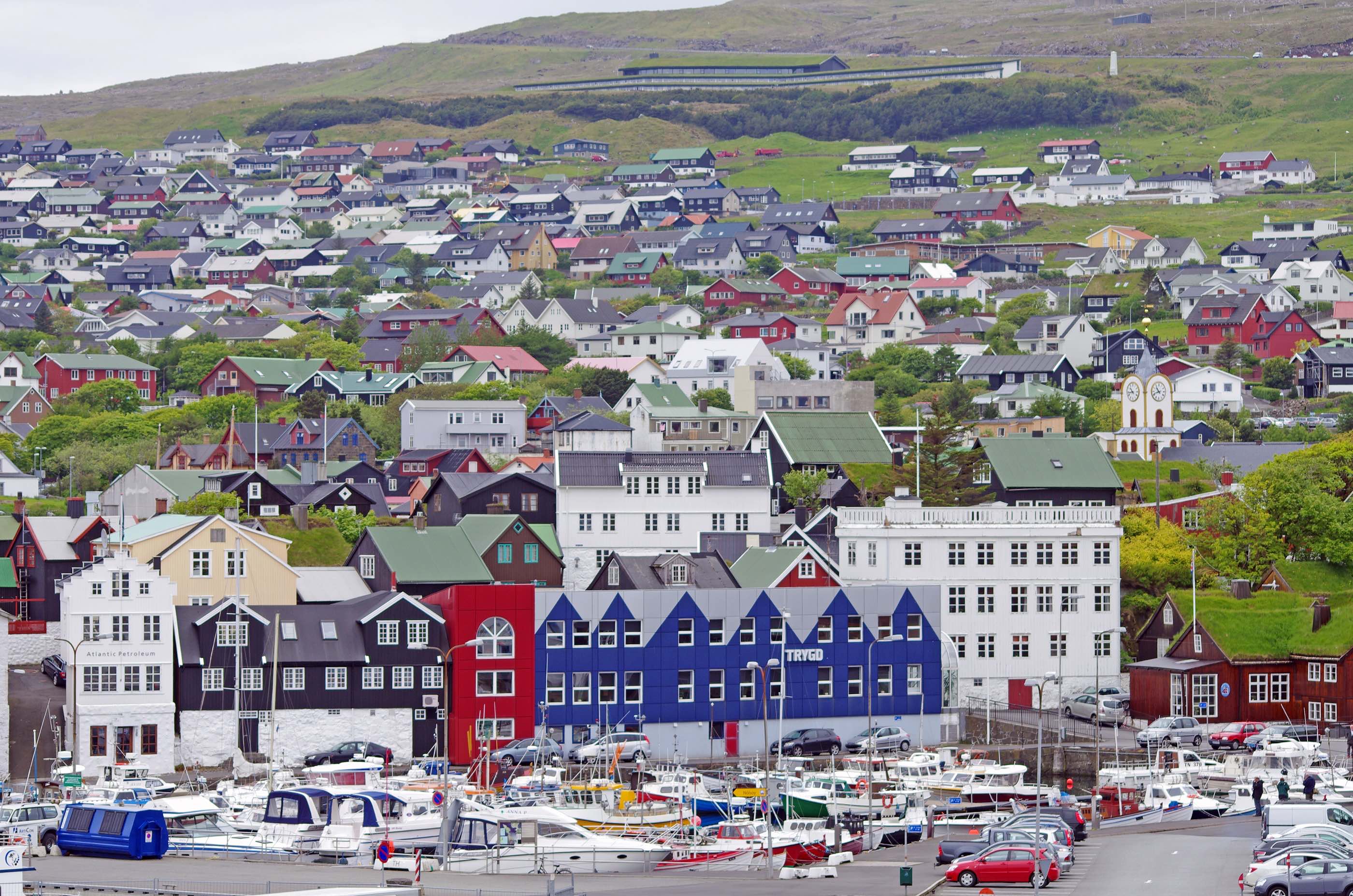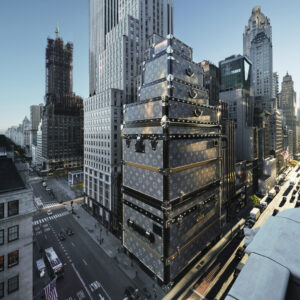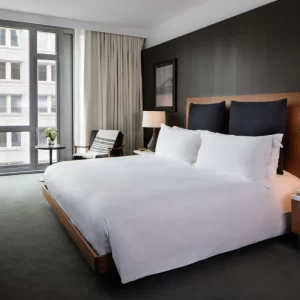About Time: You Explored The Faroe IslandsBy Caroline Patterson
The Faroe Islands are made up of an archipelago of eighteen fantastically beautiful and wild islands located in the middle of the Atlantic at 62 degrees North. In spite of it sub-arctic location, halfway between Scotland and Iceland, the climate is mild as a consequence of the Gulf Stream. If you enjoy walking, or hiking in unspoilt landscapes – this is the place for you. Wonderful indeed for long invigorating walks in stunning scenery, go and seek out the extensive birdlife. And, if like me, you love puffins, you can see puffins, puffins and well, more puffins.
The Faroe Islands: History
The Faroes are rich in other seabirds, including guillemots, gannets, shags razorbills, fulmars, arctic terns and kittiwakes that breed on sea cliffs. Land birds like oystercatchers (the national bird of the Faroe Islands), and common snipe can be seen in the heathland and moorland that cover the Islands. Go in the summertime when most of the birds can be seen and the days are longer. It’s typically still light at 10pm – get a map and start exploring.
It’s believed that Irish monks made the first settlement, around the year 625. The present population are predominantly descended from the Norwegian Vikings who arrived around the year 850, speaking Old Norse. As a consequence of Old Norse dying out in the Scottish Hebrides, Orkney and Shetland during the 13th to 18th centuries; Faroese and Icelandic are now the closest relatives to the original language of the Vikings. Since 1948 the Islands have been a self-governing region of Denmark. Faroese is the islanders first language, followed by Danish and English.
Fishing is the main industry, but the sheep population is in real evidence, as it outnumbers humans 2-1. The Faroese sheep are a wonderfully inquisitive and rugged breed, introduced to the Islands in the ninth century. In the native language, ‘Faroe’ directly translates into English as ‘Sheep Islands’. Hence, the ancient Faroese proverb ‘Wool is the Gold of the Faroe Islands.’ This has proved to be the case in recent years after the showing on television of the Nordic noir series The Killing, that featured a sweater designed by Gundrun Ludvig of Guđrun and Guđrun – a company owned and run by two Faroese women. Their focus lies in using organic material, and a sustainable workforce made up of Faroese and Jordanian women. (FYI: knitting was first developed in the area of the Levant that is now Jordan.) This wonderful shop is located in the capital Tórshavn at Niels Finsens gøta 13.
The Faroe Islands: Getting There
To get there, SAS have recently introduced a new service to the Faroes from the UK via Copenhagen so the islands are, for the first time, within easy reach. Tórshavn the capital is accesible from the airport by an incredible tunnel over five kilometres long that connects the capital with Vágar Airport. The deepest point of this tunnel is 344 feet below sea level, and links the two islands Streymoy and Vágar together. Hire a car or take a taxi, and enjoy this exceptional feat of engineering after landing at Vágar Airport.
The Faroe Islands: Tórshavn
A good place to stay when in Tórshavn is the very central Hotel Hafnia, or Hotel Foroyar. For meals check out the wonderful Barbara Fish House for lunch or dinner, just a stone’s throw away from both hotels and just fabulous.
Another delightful find is the restaurant Áarstova with delicious Faroese cooking and cod to die for. Also don’t miss the lobster bisque soup and the always tasty Faroese salmon.
In Tórshavn there are also some interesting museums and galleries including the Nordic House – a fantastic place to visit with live piano recitals in one of the galleries. It also houses a café and different photographic displays. Just down the road from the Nordic House is the National Art Gallery Listasavn Føroya, it’s the Faroes premier art gallery and is organised around continually changing displays by local artists and sculptors. When I visited, there was an exhibition of the most famous Faroese artist, writer and storyteller, William Heinesen. Also look out for the work of Sámal Joensen-Mikines whose depictions of the Faroese landscapes are magical, and also stained glass work by Tróndur Patursson whose work I was particularly impressed by.
In the centre of town explore Gongin, once Tórshavn’s main thoroughfare which today is a charming narrow lane of restored houses with typical Faroese turf roofs. However, the harbour area is the town’s focal point and certainly the most attractive part. Picture perfect coloured houses border the harbour filled with fishing boats. Tórshavn (whose name means ‘Thor’s Harbour’ after the Norse god of war) is a wonderful place to wander. It’s said to be the smallest national capital in the world – appreciate the picturesque streets, idle in the cafes, perhaps sip a rhubarb juice (the plant thrives here and appears a lot in the cuisine), and watch the fishing boats unload their catch.
If shopping is your thing visit the main shopping area located in Niels Finsens Gøta. Look out for shops selling the distinctive ‘ship’ jumpers, and choose one of the patterns inspired by centuries old knitting designs. Originally each village had a specific pattern, and if a fisherman was lost at sea he could be identified by the particular pattern on his jumper and returned to his village for burial. In Tórshavn there are at least 9 different yarn shops for you to browse and pick up a few items to take home.
For something completely different visit the tourist office and ask them to book you in for an evening with farmers Anna and Oli as guests in their farmhouse ‘Heimablídni’ in the village of Velbastaōur. The evening we were there, we shared a long communal meal with a party of Swiss hikers and swapped stories of our trip so far. Oli will regale you with wonderful tales of Faroese life while you can marvel at the magnificent views over their fjord while being served a typical Faroese meal. Magical.
If you are feeling adventurous, you could also book a trip on the schooner Norõlýsiõ and experience a grotto concert at Klæmintsgjógv – an experience I will never forget. You are transferred from the schooner at sea into a tiny fishing vessel (complete with sheepdog), and sail through a huge granite arch into a magical cave. After a few moments another small vessel sails into the grotto complete with a boatload of musicians who proceed to play wonderful music that echoes around the cave. A must-do experience.
The Faroe Islands: Saksun
When leaving Tórshavn for the day, take a drive to Saksun. Few people live here, and those who do are settled in a wonderfully remote hillside village on the banks of the Dalsa River close to Streymoy’s northwestern tip. The western edge of the village overlooks the Pollurin tidal lagoon. The stone church here enjoys one of the most dramatic positions in the whole of the Islands. One of the walls of the church is composed of glass allowing a view of the interior – a wonderful picture of total simplicity. It’s believed this area used to be an active harbour until a storm completely silted up the river mouth in the past, and this is how it remains today. It’s worth hiking down to the beach and soaking up the spectacular views all around.
Church Photo Credit: Davide Gorla
The Faroe Islands: Miõvágur
If you want to leave the capital after a few days, you can rent a car and drive to Miõvágur also on the Island of Vágar, and check into the Magenta Guesthouse. This is a unique experience and a complete time warp. Meet the wonderful owner who has researched and sought out original wallpaper and furnishings from times past (don’t forget to ask to see the King’s bedroom – available if you pre-book). A spacious room with wonderful sea views – perfect for a special occasion. It’s called the King’s bedroom because it’s rumoured to have been slept in by a Scandinavian king.
You can also take a boat to visit the bird cliffs at Vestmanna Sea Cliffs. This is a breeding area and many birds migrate from the cliffs in mid-August. From the harbour in Vestmanna you can take a boat and sail along the cliff walls into a narrow gorge where sheer rock walls rise vertically on both sides towards the sky. You will see many sea birds on this trip including a large colony of nesting puffins feeding their chicks with sand eels – a glorious sight. After the boat trip return to Tórshavn via the mountain road and stop at the viewpoint overlooking the capital.
The most fabulous and unusual place to stay is the guesthouse on the west side of Vágar in the village of Gásadalur, with the guesthouse Gásadalsgarõur only home to 4 rooms. It’s reached by a recently completed one lane tunnel bored through the mountain, and has one of the most iconic views in the whole of the Faroes. Walk or hike down to see a waterfall that cascades directly off the land into the sea, and join the locals in the café next to the guesthouse for meals and be assured of a warm welcome.
If you’re an avid hiker, pick up a Hiking in the Faroes guide at the airport. The routes in this very useful guide list the hikes in geographical order from north to south and, as well as all the hikes available. And there’s some handy tips on things such as the very variable weather conditions that exist here. Islanders talk about how all four seasons can be experienced in one day – a fact I found to be all too true. Take my advice: get out and travel to these unique and unforgettable magical islands.
Caroline travelled as a guest of Scandinavian Airlines and was hosted by Visit Faroe Islands. For more information on the destination, accommodation and dining, see here. Flights to the Faroe Islands via Copenhagen with Scandinavian Airlines start from Just £117.30 one way or £223.80 return. For more information or to book visit here or call 0871 226 7760




















